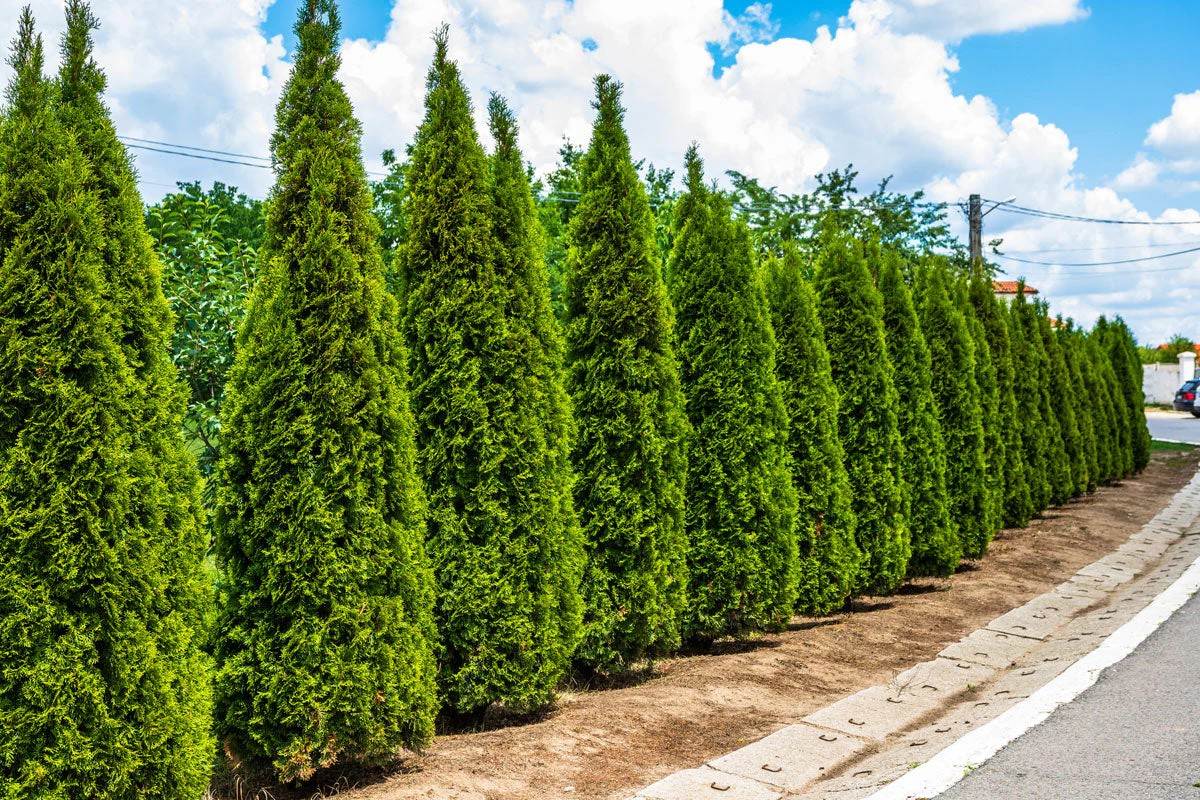
Arborvitae, also known as "tree of life," is a popular evergreen used in landscaping. Why is it so favored? First, it’s incredibly hardy, thriving in various climates. Second, its dense foliage provides excellent privacy screens. Third, it’s low-maintenance, requiring minimal pruning. Fourth, it’s resistant to many pests and diseases. Fifth, it offers year-round greenery, adding beauty even in winter. Sixth, it can grow in different soil types, making it versatile for many gardens. Seventh, it’s often used in windbreaks due to its sturdy nature. Eighth, it’s a favorite for topiary art. Ninth, its wood has historical medicinal uses. Tenth, it’s a symbol of strength and endurance.
What is Arborvitae?
Arborvitae, also known as Thuja, is a popular evergreen tree or shrub. These plants are often used in landscaping for their dense foliage and ability to form natural privacy screens. Here are some fascinating facts about Arborvitae that might surprise you.
-
Arborvitae means "tree of life" in Latin. Early French settlers in North America gave it this name because of its medicinal properties.
-
Native to North America and East Asia, Arborvitae has adapted to various climates and conditions.
-
There are five species of Arborvitae: Thuja occidentalis, Thuja plicata, Thuja standishii, Thuja koraiensis, and Thuja sutchuenensis.
-
Arborvitae can live for hundreds of years. Some trees have been known to live over 1,000 years.
-
These trees can grow up to 70 feet tall, depending on the species and growing conditions.
-
Arborvitae is often used in traditional medicine. Native Americans used its leaves and bark to treat coughs, fevers, and headaches.
Arborvitae in Landscaping
Arborvitae is a favorite among landscapers for its versatility and aesthetic appeal. Here are some interesting facts about its use in landscaping.
-
Arborvitae is commonly used as a natural privacy screen because of its dense foliage.
-
It can be shaped into hedges, topiaries, or left to grow naturally.
-
These trees are low-maintenance, requiring minimal pruning and care.
-
Arborvitae is resistant to many pests and diseases, making it a hardy choice for gardens.
-
They can tolerate a variety of soil types, including clay, loam, and sandy soils.
-
Arborvitae is drought-tolerant once established, though it prefers moist, well-drained soil.
Growth and Care Tips
Growing Arborvitae successfully requires some knowledge and care. Here are some essential tips and facts to help you.
-
Plant Arborvitae in a location that receives full sun to partial shade.
-
Space the trees properly to ensure good air circulation and prevent disease.
-
Water young Arborvitae regularly to help establish a strong root system.
-
Mulch around the base to retain moisture and regulate soil temperature.
-
Fertilize in early spring with a balanced, slow-release fertilizer.
-
Prune in late winter or early spring to maintain shape and remove dead or damaged branches.
Environmental Benefits
Arborvitae offers several environmental benefits, making it a valuable addition to any landscape.
-
Arborvitae provides habitat and food for various wildlife, including birds and small mammals.
-
The dense foliage offers excellent windbreaks, reducing soil erosion and protecting other plants.
-
Arborvitae can improve air quality by absorbing pollutants and releasing oxygen.
-
These trees can help reduce noise pollution by acting as a natural sound barrier.
-
Arborvitae contributes to carbon sequestration, helping to mitigate climate change.
Fun and Unusual Facts
Arborvitae has some unique characteristics and uses that might surprise you.
-
The wood of Arborvitae is lightweight, durable, and resistant to decay, making it ideal for outdoor furniture and fencing.
-
Arborvitae essential oil is used in aromatherapy for its calming and grounding effects.
-
The foliage of Arborvitae is often used in floral arrangements and wreaths for its long-lasting greenery.
-
Arborvitae has been used in traditional Chinese medicine for centuries to treat various ailments.
-
The tree's cones are small and inconspicuous, but they play a crucial role in reproduction.
-
Arborvitae can be propagated from cuttings, making it easy to grow new plants.
-
Some species of Arborvitae are used in bonsai, a Japanese art form of growing miniature trees.
-
Arborvitae is often planted in cemeteries as a symbol of eternal life.
-
The tree's natural oils make it resistant to termites and other wood-boring insects.
The Final Word on Arborvitae
Arborvitae trees are more than just a pretty face in your yard. These evergreens offer privacy, beauty, and even medicinal benefits. They thrive in various climates, making them a versatile choice for many gardeners. With their natural resistance to pests and diseases, they require less maintenance compared to other trees. Plus, their dense foliage provides excellent windbreaks and noise reduction.
Planting arborvitae can boost your property’s value and curb appeal. They’re also a favorite for wildlife, offering shelter and food for birds and small animals. Whether you’re looking to create a lush hedge or a standalone focal point, arborvitae trees are a solid choice.
So, next time you’re planning your garden, consider adding these resilient, beautiful trees. They’re not just good for your landscape; they’re good for the environment too. Happy planting!
Was this page helpful?
Our commitment to delivering trustworthy and engaging content is at the heart of what we do. Each fact on our site is contributed by real users like you, bringing a wealth of diverse insights and information. To ensure the highest standards of accuracy and reliability, our dedicated editors meticulously review each submission. This process guarantees that the facts we share are not only fascinating but also credible. Trust in our commitment to quality and authenticity as you explore and learn with us.
